Impacts of 5G Technology on IoT and Beyond
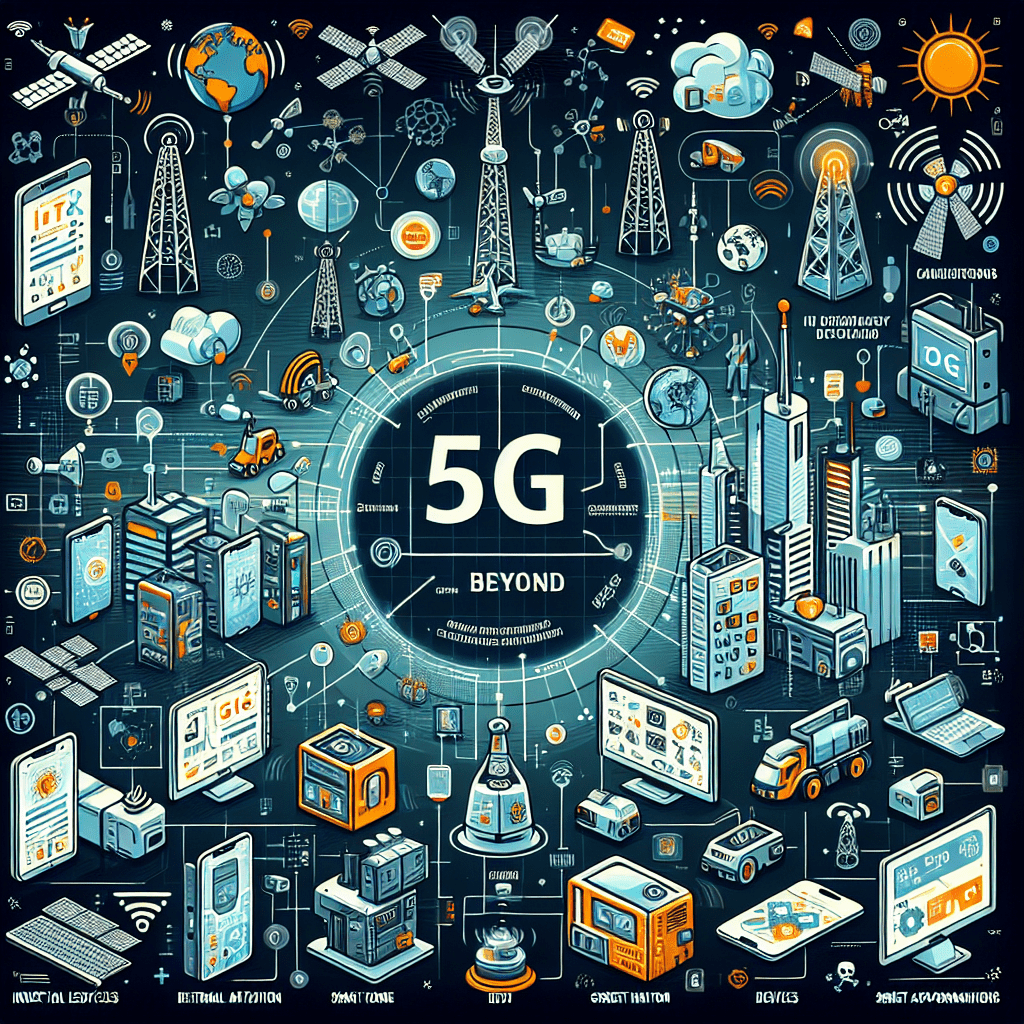
Telecoms has its most transformative event in decades as 5G welcomes a new dawn of possibilities, not just for mobile networks but for IoT and beyond. 5G, with its nearly incomprehensible data speeds, ultra-reliable low latency communications and ability to connect a huge number of devices all at once – represents the stepping stone for a new era of advancement. This translates to more accurate data transmission, device interaction in real-time with each other and an enhanced level of coordination between multiple smart devices and sensors. In addition to IoT, 5G is expected to revolutionize industries such as healthcare, automotive and entertainment – enabling solutions like operations from miles away using tele-robotic surgery systems, fully autonomous vehicles, and ultra-realistic virtual reality experiences so that consumers can immerse themselves in the television shows they watch. The change isn’t just the internet getting faster, but unleashing a web of smarts in our infrastructure that makes it easier to live happy, produced wealth agreements and sprawling new tech applications faster than ever.
Enhanced Speed and Connectivity
5G technology is on the way – and it will unlock massive Internet of Things (IoT) potential for nearly half a billion U.S. subscribers.makeText(1,5G – The Complex Wave of the Future Returns Home to Berlin! 5G enables much faster data transfer speeds than 4G (up to a hundred times faster, in fact), which opens up the gate for real-time communication between devices – ideal for a more efficient IoT ecosystem This increased velocity also reduces latency to a millisecond, that is much needed for instant data transfer to make autonomous vehicles, remote surgeries, and smart cities a reality. Furthermore, the ability of 5G to accommodate thousands of connected devices per square kilometer not only provides a high performance network for even heavily crowded places. Improved connectivity is also conducive to saving energy, as by connecting faster, these types of devices burn fewer resources and then enter low-power states sooner. As a result, 5G will enhance the features and usability of proven IoT applications, as well open the door for inventions that weren’t feasible before with new advanced technologies and services.
Faster data transfer rates
The next generation of 5G technology promises a major upgrade on data transfer rates – as much as 100 times faster than the current 4G. At this exponential level of performance, the Internet of Things (IoT) is being revolutionized into the real-time sending and receiving of massive amounts of data. Real-time processing is important for applications like autonomous vehicles, smart grids, and telemedicine which are latency sensitive. For one side, it allows for self-driving cars to respond to hazards in milliseconds that would improve safety. Immediate diagnosis and treatment in healthcare (e.g. remote surgery or monitoring) on the fast transfer of data to prevent further damage. Besides, this high speed allows to connect more and varied devices together as a result – hence the prominent role the new Wi-Fi will be playing in smart home ecosystems and smarter cities. Even outside of IoT, entertainment will improve (ultra HD video streaming and virtual reality as a few examples) in that there will be more bandwidth available for those applications, making them even more realistic without lag. In the end, it all adds up to faster data rates – and that’s what makes a hyper-connected future efficient and innovative.
Reduced latency
Reducing latency represents one of the most powerful impacts that 5G technology will have on the Internet of Things (IoT) and beyond, as it changes how devices can interact and react. Latency is the time elapsed from the point of origin to a particular destination and then back again. 5G brings this latency down to a mere glacial 1 millisecond as opposed to the 50 milliseconds of an otherwise snappy forerunner, 4G. This quick approach to communication leads to increased productivity of IoT devices, which have the ability to conduct real-time data completion and creation. These applications could be based on the Internet of Things (IoT), autonomous vehicles, and remote surgery better performed with fewer latencies, smart grids getting more intelligent, and augmented reality becoming really real. As an example, in automated vehicles, lower the latency better are the response time to obstacles and so higher is the safety. In industrial IoT, it powers efficient machinery and robotic systems. In conclusion, the low-latency nature of 5G will be the launchpad for revolutionary IoT tech that has long been suppressed due to technology constraints, and give rise to a hyper-connected, receptive, and astute system overall.
Robust and reliable connections
Reducing latency represents one of the most powerful impacts that 5G technology will have on the Internet of Things (IoT) and beyond, as it changes how devices can interact and react. Latency is the time elapsed from the point of origin to a particular destination and then back again. 5G brings this latency down to a mere glacial 1 millisecond as opposed to the 50 milliseconds of an otherwise snappy forerunner, 4G. This quick approach to communication leads to increased productivity of IoT devices, which have the ability to conduct real-time data completion and creation. These applications could be based on the Internet of Things (IoT), autonomous vehicles, and remote surgery better performed with fewer latencies, smart grids getting more intelligent, and augmented reality becoming really real. As an example, in automated vehicles, lower the latency better are the response time to obstacles and so higher is the safety. In industrial IoT, it powers efficient machinery and robotic systems. In conclusion, the low-latency nature of 5G will be the launchpad for revolutionary IoT tech that has long been suppressed due to technology constraints, and give rise to a hyper-connected, receptive, and astute system overall.
Transformative Impact on IoT Devices
5G technology is about to change the landscape as far as IoT devices are concerned – it will greatly improve functionality and integration between different devices. 5G: With its very low latency and much faster data transfer speed, 5G will enable IoT devices to communicate more quickly and effectively. This will lower the latency in handling and forwarding data, a critical parameter for example for real-time response applications like autonomous vehicles, smart grids or remote healthcare monitoring systems. Furthermore, with 5G supporting a lot more devices per square kilometer creates an ideal IoT environment in smart cities, homes and industries; enabling more advanced and integrated eco-systems. There is also less network congestion because these devices can operate at the same time. This will in-turn, catalyse innovation as 5G breaks new ground for advanced analytics, automation and even the integration of IoT into mundane tasks transforming our interactions with technology and our surroundings.
Improved communication between devices
5G, the Internet of Things (IoT), and 5 Features Unlike the previous generations, 5G opens up ultra-reliable, low-latency connections that make devices appear to interact in near real-time. The basis for higher level applications such as autonomous vehicles, smart cities, and advanced manufacturing systems where real-time data feedback is required. Secondly, 5G provides enhanced bandwidth and greater throughput (data rate), which enables connecting thousands, if not tens of thousands of devices simultaneously without affecting connection speeds, which sets a foundation that allows IoT ecosystems to expand infinitely.
For you and me, this is big news because it will allow the myriad smart home gadgets, wearables, industrial sensors and other IOT-class devices to talk to one another much faster and with less effort enabling new levels of functionality. For Businesses, It can mean higher operational efficiencies, improved asset management, and better data analytics. In the world of consumers, this means more intelligent living spaces, monitoring health and better (more subtle) blending of technology with daily routines. Finally, the improved communication abilities of 5G represent a WHOLE NEW LEVEL for the IoT to unlock new possibilities and levels of interaction.
Higher data processing capabilities
The dawn of 5G technology is poised to radically improve the data processing capacity in the vast Internet-of-Things (IoT) environment, as well as other arenas. 5G operates up to 100 times faster than 4G speeds and can process data in real-time, decreasing latency by just milliseconds. This high-speed data transfer is critical for real-time applications like self-driving cars, smart grids, or remote surgery. Advanced data processing capabilities make it possible to run complex analytical and machine learning algorithms on the edge rather than relying on centralized data centers, resulting in reduced latency. In addition, 5G offers very high connection density, meaning one needs to ability to support a massive number of IoT devices that are capable of talking and exchanging data at the same time without a performance hit. Accelerating data processing power that is revitalizing industries fromthe factory floor to the future of”smart city” infrastructure – establishing a more seamless and effective digital tomorrow.
Greater device density support
The dawn of 5G technology is poised to radically improve the data processing capacity in the vast Internet-of-Things (IoT) environment, as well as other arenas. 5G operates up to 100 times faster than 4G speeds and can process data in real-time, decreasing latency by just milliseconds. This high-speed data transfer is critical for real-time applications like self-driving cars, smart grids, or remote surgery. Advanced data processing capabilities make it possible to run complex analytical and machine learning algorithms on the edge rather than relying on centralized data centers, resulting in reduced latency. In addition, 5G offers very high connection density, meaning one needs to ability to support a massive number of IoT devices that are capable of talking and exchanging data at the same time without a performance hit. Accelerating data processing power that is revitalizing industries fromthe factory floor to the future of”smart city” infrastructure – establishing a more seamless and effective digital tomorrow.
Enhanced real-time analytics
The coming 5G technology paradigm is expected to transform real-time Io T analytics, throughout many IIoT and traditional non-IIoT sectors. 5G brings extremely fast data transfer speeds and nearly imperceptible latency allowing massive amounts of IoT device-generated data to be collected, processed and analyzed instantly. This increased connectivity guarantees that the data from every sensor, camera, and other connected devices can easily be brought in and analyzed quickly so that decisions can fly you ahead timely;base on informed answers. This translates to improved patient vital monitoring and faster response times for sectors such as healthcare. Real-time analytics can make a production line more efficient in manufacturing, it can predict when machines on that line will need maintenance and it can catch quality-control issues on the go. Autonomous vehicles would still manage offering the very low latencies required for safe driving on split-second data processing, but that is besides scaling Web size processing. All in all, this 5G and real-time analytics becomes an efficiency booster allowing for more competitive frameworks to thrive while also opening the doors for new creative breakthroughs within the system.
Applications in Various Industries
With its high speed, low latency, and improved connectivity, 5G technology is expected to transform many industries by improving how we use Internet of Things (IoT) applications. In healthcare, 5G allows for real-time remote monitoring and telemedicine and ensures that there is much better medical patient outcomes. Increased capacity for data gathering and communicating has also enabled smart cities to operate in a better managed way, taking advantage of more efficient traffic and waste management as well as energy optimization. 5G in Automotive: In the automotive field, 5G plays an important role in autonomous vehicles by allowing the infrastructure for the real-time exchange of data between vehicles and their surroundings is enhanced for added safety and efficiency. This leads to smarter production lines by connecting IoT devices with 5G, being able to use them with predictive maintenance control without human intervention and a further automatization of production lines, ultimately increasing the productivity and reducing operating downtimes. Agriculture Similarly benefits from precision farming technologies, offering improved crop management and productivity predictions. As a whole, 5G injected to each industry promotes innovation, productivity and business model creation, changing the world of prospective in every area.
Smart cities
With its high speed, low latency, and improved connectivity, 5G technology is expected to transform many industries by improving how we use Internet of Things (IoT) applications. In healthcare, 5G allows for real-time remote monitoring and telemedicine and ensures that there is much better medical patient outcomes. Increased capacity for data gathering and communicating has also enabled smart cities to operate in a better managed way, taking advantage of more efficient traffic and waste management as well as energy optimization. 5G in Automotive: In the automotive field, 5G plays an important role in autonomous vehicles by allowing the infrastructure for the real-time exchange of data between vehicles and their surroundings is enhanced for added safety and efficiency. This leads to smarter production lines by connecting IoT devices with 5G, being able to use them with predictive maintenance control without human intervention and a further automatization of production lines, ultimately increasing the productivity and reducing operating downtimes. Agriculture Similarly benefits from precision farming technologies, offering improved crop management and productivity predictions. As a whole, 5G injected to each industry promotes innovation, productivity and business model creation, changing the world of prospective in every area.
Healthcare advancements
With its high speed, low latency, and improved connectivity, 5G technology is expected to transform many industries by improving how we use Internet of Things (IoT) applications. In healthcare, 5G allows for real-time remote monitoring and telemedicine and ensures that there is much better medical patient outcomes. Increased capacity for data gathering and communicating has also enabled smart cities to operate in a better managed way, taking advantage of more efficient traffic and waste management as well as energy optimization. 5G in Automotive: In the automotive field, 5G plays an important role in autonomous vehicles by allowing the infrastructure for the real-time exchange of data between vehicles and their surroundings is enhanced for added safety and efficiency. This leads to smarter production lines by connecting IoT devices with 5G, being able to use them with predictive maintenance control without human intervention and a further automatization of production lines, ultimately increasing the productivity and reducing operating downtimes. Agriculture Similarly benefits from precision farming technologies, offering improved crop management and productivity predictions. As a whole, 5G injected to each industry promotes innovation, productivity and business model creation, changing the world of prospective in every area.
Automotive and transportation
With its high speed, low latency, and improved connectivity, 5G technology is expected to transform many industries by improving how we use Internet of Things (IoT) applications. In healthcare, 5G allows for real-time remote monitoring and telemedicine and ensures that there is much better medical patient outcomes. Increased capacity for data gathering and communicating has also enabled smart cities to operate in a better managed way, taking advantage of more efficient traffic and waste management as well as energy optimization. 5G in Automotive: In the automotive field, 5G plays an important role in autonomous vehicles by allowing the infrastructure for the real-time exchange of data between vehicles and their surroundings is enhanced for added safety and efficiency. This leads to smarter production lines by connecting IoT devices with 5G, being able to use them with predictive maintenance control without human intervention and a further automatization of production lines, ultimately increasing the productivity and reducing operating downtimes. Agriculture Similarly benefits from precision farming technologies, offering improved crop management and productivity predictions. As a whole, 5G injected to each industry promotes innovation, productivity and business model creation, changing the world of prospective in every area.
Industrial automation and manufacturing
5G is potentially a huge step change from previous wireless technologies and for the industrial automation and manufacturing markets. 5G ultra-reliable low latency communication (URLLC) allows for faster transmission of data, and is therefore necessary for complex industrial processes to be automated efficiently. This allows for the creation of a real-time control and coordination environment between robots and machinery, to dramatically improve efficiency and accuracy in manufacturing. Network slicing is further improved as it enables individual network segments for different industrial applications that provides a consistent and relevant performance to the specific demands of distinct processes. 5G Goes BeyondTo make this possible, 5G allows the combination of IoT devices with advanced sensors that allow for extensive monitoring and predictive maintenance. This includes a decrease in downtime and a longer equipment life. It also promises breakneck agility and secure connections for smart factories with its support for mMTC (massive machine-type communications). Therefore, 5G drives the initiative of Industry 4.0 enabling smart, connected and self-adjusting digital manufacturing walkways that can increase productivity and creativity many folds.
Challenges and Considerations
5G Technology – Boon for IoT and it comes with Pros & Cons as well First and foremost, security becomes a huge problem considering the fact we are going to have many more devices connected over the network, this opens it up for potential cyber-attacks and data breaches requiring strong encryption and all secure protocols. There is also a large amount of energy consumption by 5G infrastructure, which poses operational and environmental challenges. The implementation of dense small-cell networks needed for 5G can result in urban planning logistics and convenience factors as well. In addition, it has to be fully compatible with legacy systems and new 5G devices, which requires the two to interoperate without hitch. There are also regulatory and spectrum allocation challenges, as governments and agencies have to work together on envisioned common frequency bands & policies. At the same time, high costs for infrastructure upgrades and manufacturing compatible devices could act as barriers to entry – especially in areas where there is less wealth. Solving these problems will be critical to unlocking the promise of 5G and guiding it towards transforming IoT ecosystems and beyond.
Infrastructure requirements
The deployment of 5G has wide-ranging implications for the network infrastructure required of IoT and beyond. However, unlike its predecessors, 5G relies on a densified network of small cells to provide faster data speeds, ultra-low latency and superior connectivity. The process entails significant densification of small cell – meaning installation that largely are mounted on to street lights, utility poles and structures in densely populated urban locations for ubiquitous coverage and capacity. Moreover, 5G requires sophisticated fiber optic backhaul infrastructure to cope with data throughout of astronomical proportion and allow the interoperability of devices. These fiber networks also need to be extended and augmented to carry the additional burden. In 5G, processing data close to the source by means of edge computing centers also becomes essential (to lower latencies and boost real time application performance). ConclusionIn short, network slicing integration also relies on advanced software-defined networking(Check out this SDN Introduction) technologies that can allow these enterprises to build and orchestrate a number of virtual networks over one physical infrastructure for varied use cases; Industrial IoT to autonomous vehicles. Put simply, transitioning to 5G requires major physical and digital exercise for the most part.
Security and privacy concerns
The deployment of 5G has wide-ranging implications for the network infrastructure required of IoT and beyond. However, unlike its predecessors, 5G relies on a densified network of small cells to provide faster data speeds, ultra-low latency and superior connectivity. The process entails significant densification of small cell – meaning installation that largely are mounted on to street lights, utility poles and structures in densely populated urban locations for ubiquitous coverage and capacity. Moreover, 5G requires sophisticated fiber optic backhaul infrastructure to cope with data throughout of astronomical proportion and allow the interoperability of devices. These fiber networks also need to be extended and augmented to carry the additional burden. In 5G, processing data close to the source by means of edge computing centers also becomes essential (to lower latencies and boost real time application performance). ConclusionIn short, network slicing integration also relies on advanced software-defined networking(Check out this SDN Introduction) technologies that can allow these enterprises to build and orchestrate a number of virtual networks over one physical infrastructure for varied use cases; Industrial IoT to autonomous vehicles. Put simply, transitioning to 5G requires major physical and digital exercise for the most part.
Regulatory and standardization issues
The deployment of 5G has wide-ranging implications for the network infrastructure required of IoT and beyond. However, unlike its predecessors, 5G relies on a densified network of small cells to provide faster data speeds, ultra-low latency and superior connectivity. The process entails significant densification of small cell – meaning installation that largely are mounted on to street lights, utility poles and structures in densely populated urban locations for ubiquitous coverage and capacity. Moreover, 5G requires sophisticated fiber optic backhaul infrastructure to cope with data throughout of astronomical proportion and allow the interoperability of devices. These fiber networks also need to be extended and augmented to carry the additional burden. In 5G, processing data close to the source by means of edge computing centers also becomes essential (to lower latencies and boost real time application performance). ConclusionIn short, network slicing integration also relies on advanced software-defined networking(Check out this SDN Introduction) technologies that can allow these enterprises to build and orchestrate a number of virtual networks over one physical infrastructure for varied use cases; Industrial IoT to autonomous vehicles. Put simply, transitioning to 5G requires major physical and digital exercise for the most part.
Impact on existing technologies
The deployment of 5G has wide-ranging implications for the network infrastructure required of IoT and beyond. However, unlike its predecessors, 5G relies on a densified network of small cells to provide faster data speeds, ultra-low latency and superior connectivity. The process entails significant densification of small cell – meaning installation that largely are mounted on to street lights, utility poles and structures in densely populated urban locations for ubiquitous coverage and capacity. Moreover, 5G requires sophisticated fiber optic backhaul infrastructure to cope with data throughout of astronomical proportion and allow the interoperability of devices. These fiber networks also need to be extended and augmented to carry the additional burden. In 5G, processing data close to the source by means of edge computing centers also becomes essential (to lower latencies and boost real time application performance). ConclusionIn short, network slicing integration also relies on advanced software-defined networking(Check out this SDN Introduction) technologies that can allow these enterprises to build and orchestrate a number of virtual networks over one physical infrastructure for varied use cases; Industrial IoT to autonomous vehicles. Put simply, transitioning to 5G requires major physical and digital exercise for the most part.
So what have we concluded?
5G will represent a paradigm shift for how industries and consumers utilize the IoT and related technologies. As its essence, 5G aims at the speed of lighting, extraordinarily low latency, and the ability to dock far more devices than we have today (10xs more) than it is for 4G. Such high-performance, real-time connectivity delivers real-time data exchange capacities and the ability to develop advanced smart city, autonomous vehicle, healthcare and industrial automation applications. Additionally, 5G offers the reliability and efficiency thus able to support the creation of new IoT ecosystems and services at a scale which was previously out of reach. Although obstacles such as high investments in infrastructure and cyber security require resolution, the combined advantages signal a future in which greater connectivity will help accelerate decision-making and operational responsiveness. In short, the combination of 5G with IoT platforms propels innovation speed and provides an opportunity to create a more connected, effective, and competitive global structure.
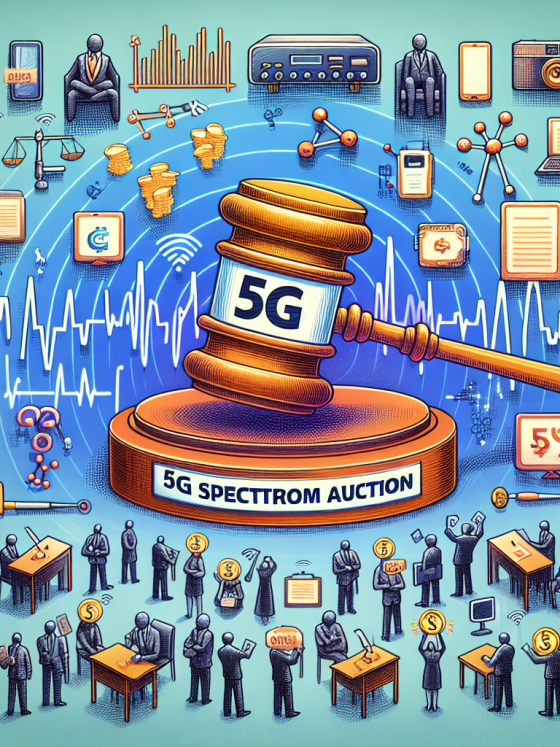
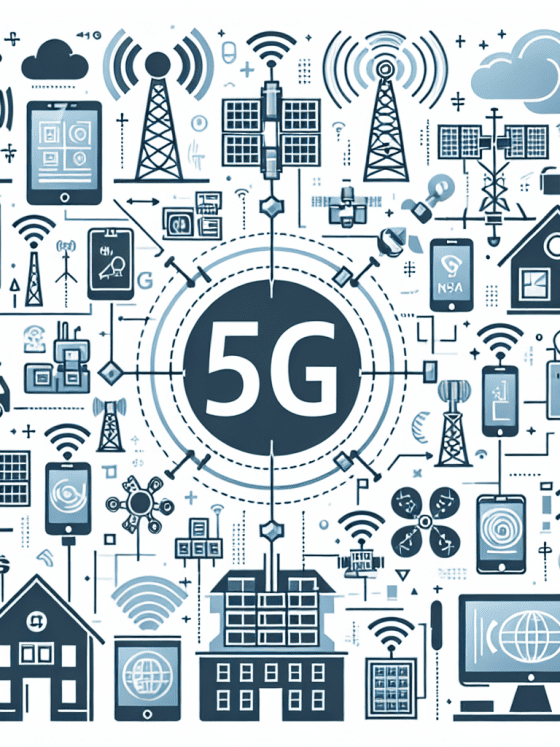
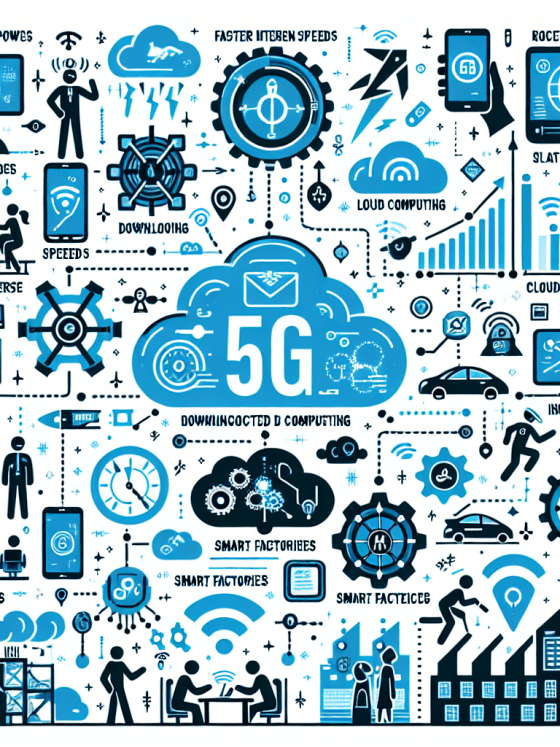
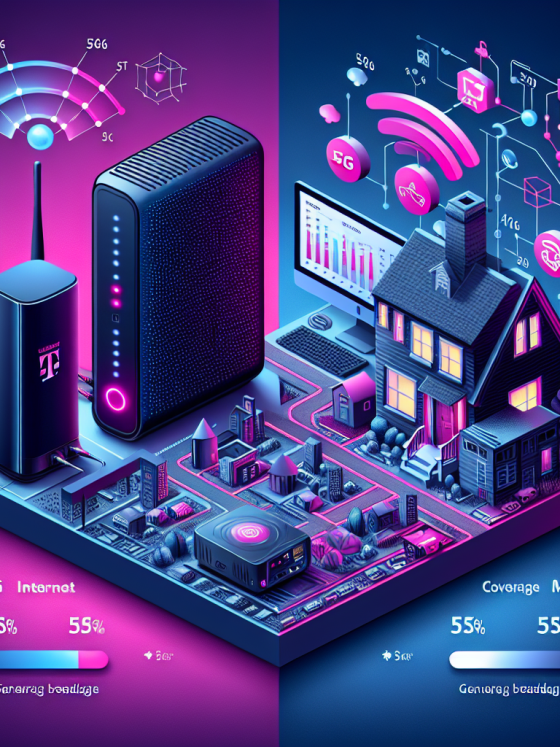
![Introduction to 5G Technology [PPT]](https://5ginnovations.top/wp-content/uploads/2024/07/introduction-to-5g-technology-ppt-560x747.jpg)
![Complete Guide to 5G Technology [PDF]](https://5ginnovations.top/wp-content/uploads/2024/07/complete-guide-to-5g-technology-pdf-560x747.jpg)